Winter camping can be a challenge. It often requires specialized gear, lugging a heavier pack, and contending with the constant threat of cold, wet, miserable nights. However, keeping comfortable when the mercury drops is not about packing more, but packing smarter. Here’s how to stay toasty warm in the backcountry, even in the dead of winter.
Wear wool because cotton kills (literally)
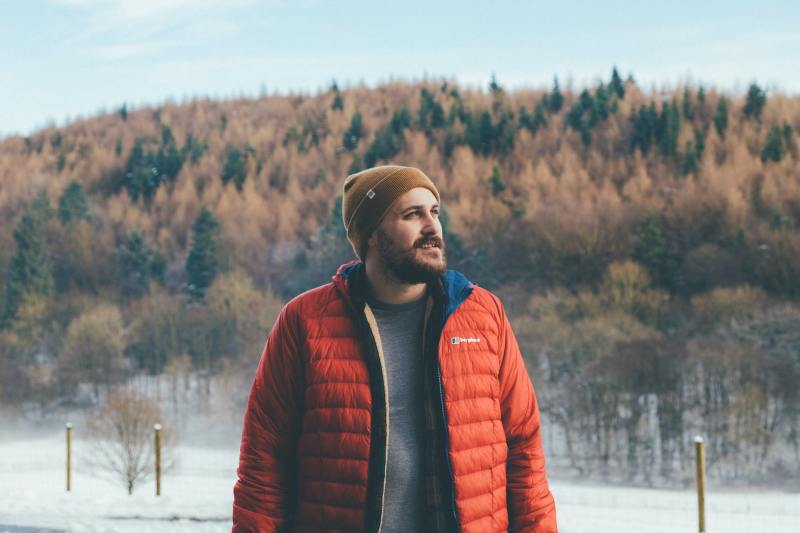
Most campers know that cotton is the worst material for hiking and camping. It can be downright lethal if worn in winter, especially when sweat is a factor. Once wet, it takes forever to dry and loses most of its heat retention properties as well. Bottom line: Wearing wet cotton in winter is the best recipe for hypothermia. Merino wool is far superior or, if you prefer, there are many great synthetic alternatives as well.
Layer up the right way
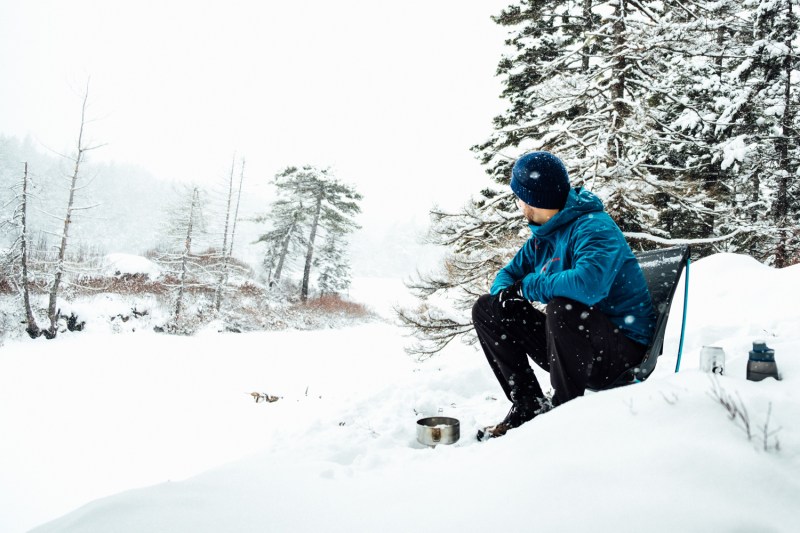
It’s tempting to blindly pile on the layers to keep warm. This can be sort of effective, but it pays to consider each layer individually. Wear fitted, but not tight, layers that don’t restrict blood flow. Sock liners and a cap that keeps you warm without making you sweat are essential. Fingerless gloves can be another great option as they allow for better hand dexterity without having to completely remove them for essential tasks like cooking or pitching a tent.
Perfect your sleep space
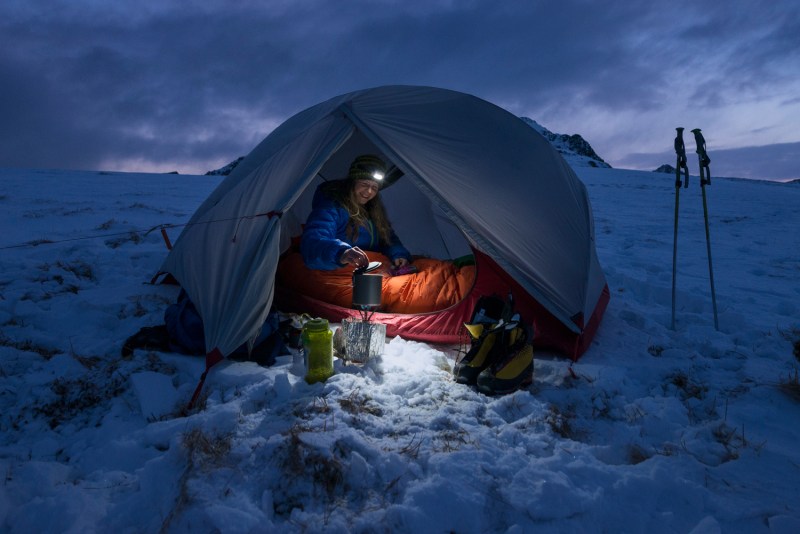
This is less about feng shui and more about flattening your sleep space and minimizing heat loss in the night. When camping in snow, find a campsite early. Flatten the ground beneath your tent or sleeping bag as early as possible. Once the snow thaws and refreezes, it’s next to impossible to smooth out. Carve out a small trough that’s roughly the size of your sleep pad to serve as a bed “platform.” This helps minimize the ambient space around you, which in turn maximizes heat retention in the night.
Insulate your winter tent
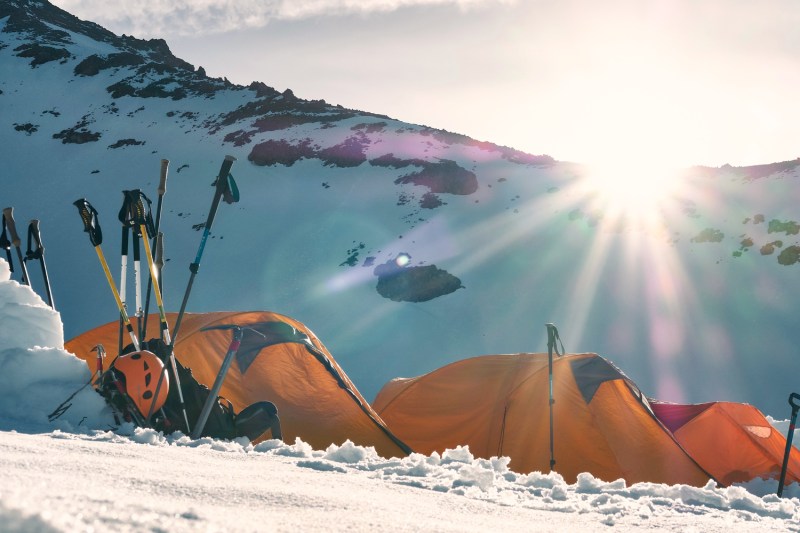
Some four-season tents are only rated down to around 20 degrees Fahrenheit. Pack a tent designed for the surrounding climate. There’s no need to go overboard, but a 20-degree tent — whether it’s billed as “four-season” or not — isn’t going to cut it when you’re camping in Montana in February.
Consider the size of your tent as well. Sizing up (e.g., buying a two-person tent for your solo outings) for extra square footage in the backcountry might seem tempting. However, all that dead space forces your body to work harder to heat it. Use gear — backpacks, jackets, even pets — to line the perimeter of your tent and act as insulation. If camping with a buddy, arrange your sleep pads as close together as is comfortable. Two warm bodies can maintain collective heat much better and faster than one.
Pack an insulated foam sleeping pad
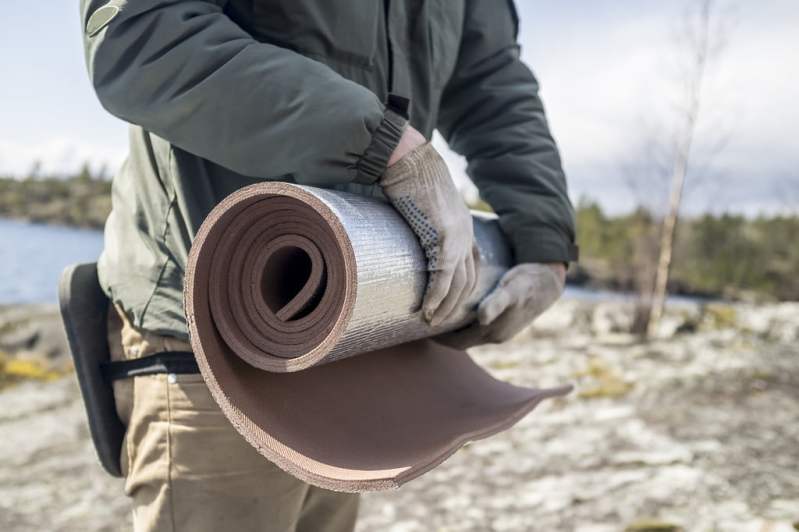
Sleeping on cold ground is one of the fastest ways to lose body heat. Winter sleeping bags help keep you warm and insulated from the cold air but do little to stop conduction heat loss between your body and the earth. Consider an insulated, closed-cell foam sleeping pad like those from Therm-a-Rest. They’re durable, lightweight, and comfortable. Most importantly, however, they can be a literal lifesaver when the mercury dips well below freezing.
Fashion a backcountry “sauna stone”
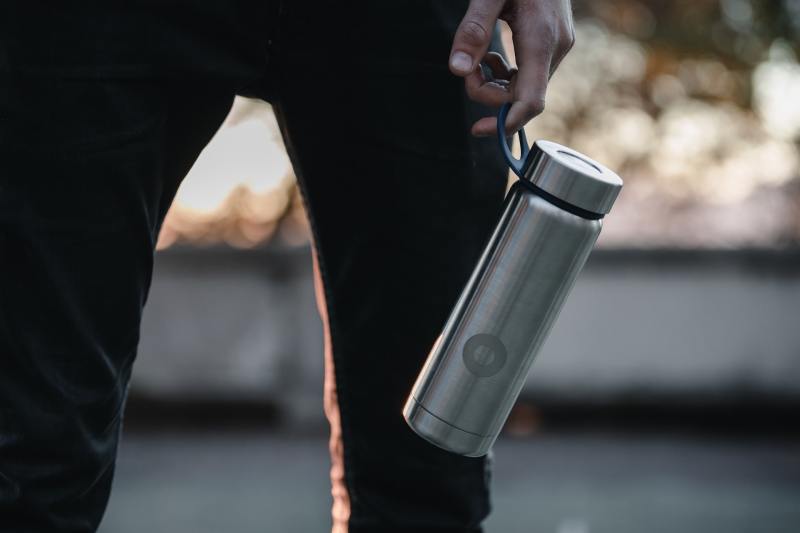
Non-insulated stainless steel bottles are incredibly versatile in the backcountry. Fill one with hot water at night to create a makeshift sauna stone, then place it in your sleeping bag. This trick is incredibly effective, especially if the bottle is placed strategically near your core or femoral artery. Depending on how cold you sleep, the bottle will keep warm for hours. Unless you’re in a survival situation, don’t attempt this with a plastic water bottle (even BPA-free bottles), however, as harmful chemicals could leech into the water.
Calorie-load at bedtime
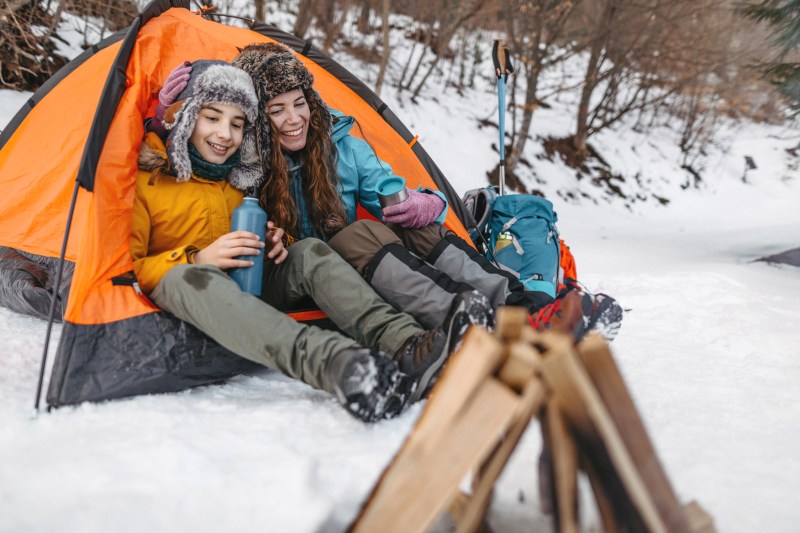
Fuel (i.e., food) generates heat. Downing a snack, a meal, or even a drink like hot cocoa just before bed can rev your body’s engine to help keep you warm. Choose high-calorie foods rich in fat and carbs. Peanut butter, nuts, cheese, and Clif bars are all great options. Don’t hesitate to grab a similar midnight snack as well.
Check your frost to prevent wet gear
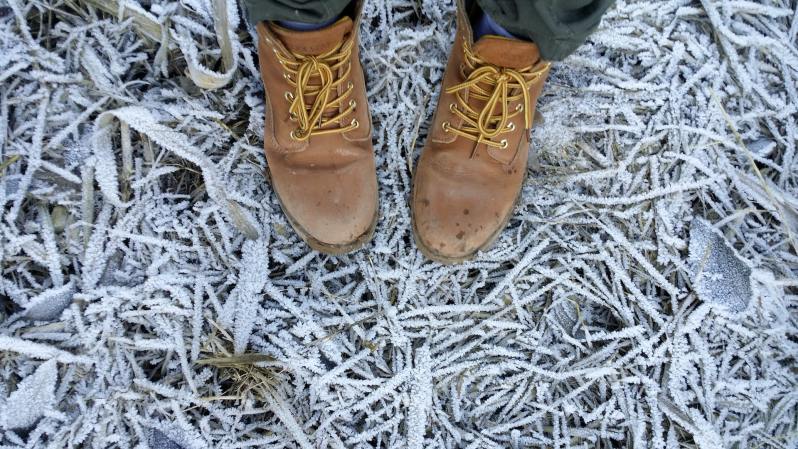
Even with a door cracked, frost can form in your tent in the morning. This can quickly melt once the sun rises, and all that water will likely fall onto and dampen your gear. If you’re an early-riser, sweep the frost away before it becomes an issue. Stowing gear overnight under a tarp or in a garbage bag can also help.
Protect your precious electronics from the cold
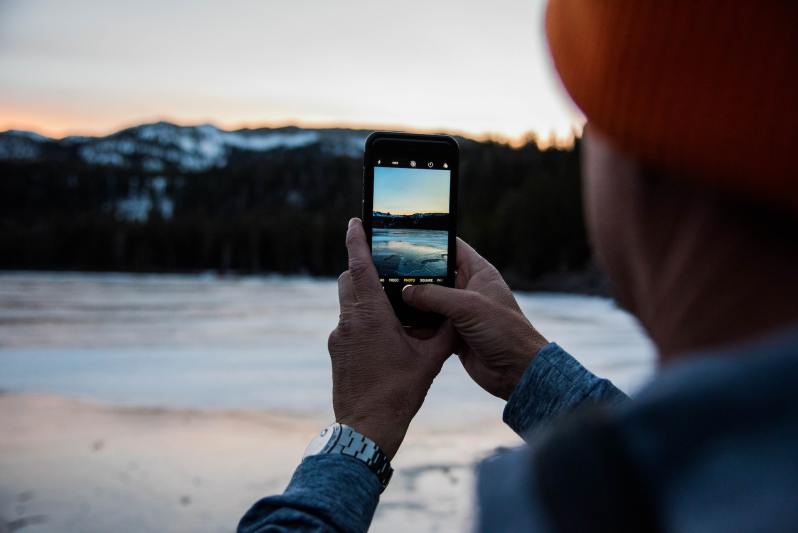
Most of us carry at least a smartphone and a camera when hiking. While it’s something we don’t often think about, all electronics are designed to work within a safe operating temperature. Most outdoor gear like GPS devices and weatherproof cameras work within a wide range, so this likely isn’t an issue. But it’s worth double-checking the limits of your gear. Charging or operating your gadgets outside of these limits could cause irreparable damage.



